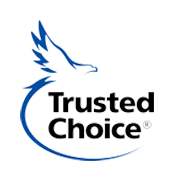Frequently Asked Questions
According to the National Flood Insurance Program floods are the most common natural disaster. With more and more buildings, roads and parking lots being constructed where forests and meadows used to exist, floods are becoming more severe.
People who live in a Special Flood Hazard area have a 26% chance of experiencing a flood during the life of a 30-year mortgage, compared to only a 4% chance of fire. A NFIP policy also reimburses you for actions you take to prevent flood damage. For example, costs for moving your belongings to a safe location are reimbursed up to a limit in the policy, with no deductible.
In some areas, homeowners are required by law to purchase flood insurance. Even if it’s not a requirement for you, flood insurance will help you protect your home and your financial stability. Most Homeowner’s insurance policies do not cover flood.
The typical homeowner’s policy has two main sections: Section I covers the property of the insured, and Section II provides personal liability coverage for the insured. Almost anyone who owns or leases property has a need for this type of insurance. Usually, homeowner’s insurance is required by the lender to obtain a mortgage. Note: Homeowner’s does not cover flooding. Flood insurance is a separate policy.
The premium is made up of all the coverages and limits selected on the individual policy. One of the coverages affected by the premium is Coverage A, or the amount it would cost to rebuild your home – the cost of material, labor, building permits. This amount is not necessarily the same as the real estate or market value of your home. If you’re not sure how to estimate your home’s rebuilding cost, you can consult a real-estate agent or contractor, or obtain a full home estimate which might run you about $300. That might seem like a lot, but it’s a small price to pay to be sure that you’re fully covered. A study conducted in 2009 by United Policyholders found that two-thirds of U.S. homes are underinsured.
When obtaining coverage for your personal belongings, Coverage C on your policy, it is important to understand how much you’ll be reimbursed in the event of a loss. Covered losses can be paid on either an actual cash value basis or on a replacement cost basis. When “actual cash value” is used, the policy owner is entitled to the depreciated value of the damaged property. Under the “replacement cost” coverage, the policy owner is reimbursed an amount necessary to replace the article with one of similar type and quality at current prices.
Many Florida home insurance companies offer discounts – A company may choose to offer discounts based on the age of the home’s construction, roof age/shape, opening protection, policyholder age (55+), a secure (gated) community, a central burglar / fire alarm, and an indoor sprinkler system. Make sure you check with your insurance provider before making any upgrades to your home so you know what the specific qualifications are. Outside of discounts, you can take a closer look at the amount of coverage you selected in your policy and make adjustments. For instance checking your Coverage C amount to account for only the items you own could result in a lower coverage amount and premium.
A PERSONAL UMBRELLA IS designed to increase your liability protection. This single policy acts as an “umbrella” over all of your other personal liability policies — home, auto, boat, RV, etc. — so you have a higher personal liability limit encompassing all of your personal policies. In certain circumstances, an umbrella policy may provide personal liability coverage that is otherwise excluded from your other policies. For example, an umbrella policy provides coverage anywhere in the world, whereas your auto policy usually provides coverage in the US and Canada only.
In our very litigious society, even individuals with modest incomes and assets are often subjects of large lawsuits. Since they are even less able than a wealthy individual to pay large damage awards, they recognize the need to have coverage limits greater than what can be obtained from their homeowner or auto policies.
You need more coverage than you have assets. Some recommend that you have at least $1 million to provide additional liability coverage beyond what is offered with your auto and homeowners policies in case you end up with a liability claim against you.
If you own a home, have automobiles then you may likely need an umbrella to cover you from any liability that may occur and threaten your financial stability.
Contact Thompson Baker Today!
Contact ThompsonBaker for more information about our insurance services by calling us at (904) 824-1631 today!
Our Partners



